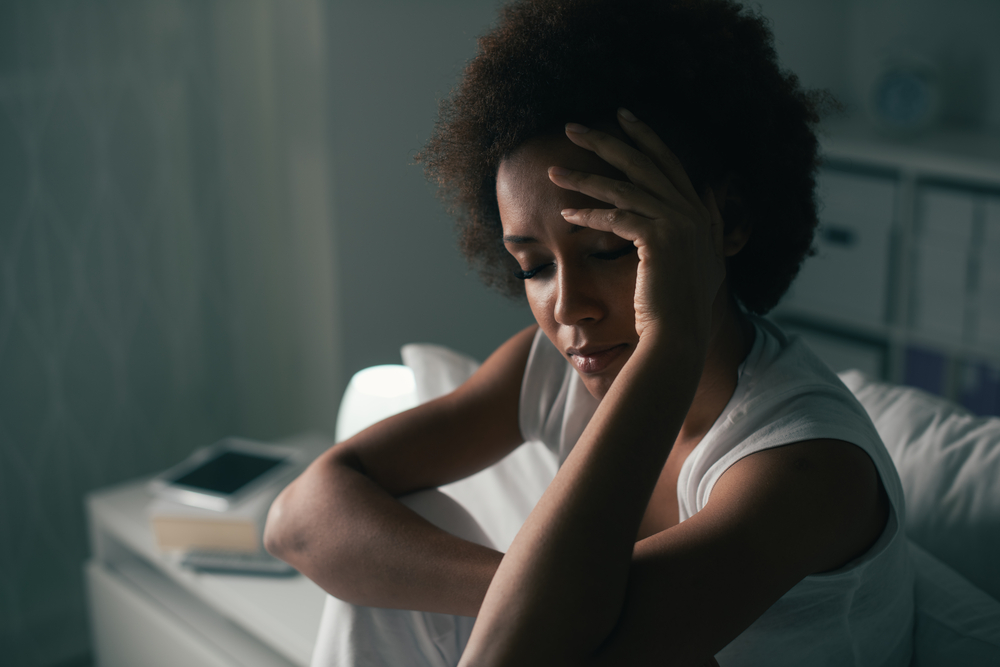Not All Insomnia Is The Same — In Fact, There May Be 5 Types

There's a new way of looking at insomnia.
Rather than just considering sleep-related symptoms, a new study from the Netherlands branches out to look at personality traits and emotions, and finds there are five types of insomnia.
The findings may pave the way for a better understanding of the causes of insomnia, as well as the development of more personalized treatments for the condition, the researchers said. [5 Surprising Sleep Discoveries]
The study, conducted by researchers at the Netherlands Institute for Neuroscience in Amsterdam, was published online Jan. 7 in the journal The Lancet Psychiatry.
Five types
Insomnia affects an estimated 10 percent of the population. The main symptoms involve difficulty falling or staying asleep — for example, people with the condition may lie awake for long periods before being able to fall asleep, or they may wake up too early and not be able to fall back to sleep, according to the National Institutes of Health.
But despite having similar symptoms, people with insomnia can vary widely in their response to treatment. In addition, attempts to find "biomarkers" for the condition — like commonalities in people's brain scans — have proved futile, the researchers said. These inconsistencies suggest that there may be more than one type of insomnia.
In an effort to find "subtypes" of insomnia, the researchers analyzed information from more than 4,000 people who filled out online surveys about their sleep habits and other traits as part of a project called the Netherlands Sleep Registry.
Sign up for the Live Science daily newsletter now
Get the world’s most fascinating discoveries delivered straight to your inbox.
Based on their survey responses, about 2,000 of these participants had insomnia. (These participants scored high on an insomnia-related survey, but did not have a confirmed diagnosis.) To identify subtypes, the researchers went beyond looking at sleep-related symptoms and considered other factors, including personality traits, mood, emotions and response to stressful life events.
The study authors found that participants with insomnia tended to fit into one of five categories:
- Type 1: People with type 1 insomnia tended to have high levels of distress (meaning high levels of negative emotions like anxiety and worry) and low levels of happiness.
- Type 2: People with type 2 insomnia had moderate levels of distress, but their levels of happiness and experiences of pleasurable emotions tended to be relatively normal.
- Type 3: People with type 3 insomnia also had moderate levels of distress, but had low levels of happiness and reduced experiences of pleasure.
- Type 4: People with type 4 insomnia typically had low levels of distress, but they tended to experience long-lasting insomnia in response to a stressful life event.
- Type 5: People with type 5 insomnia also had low levels of distress, and their sleep disorder wasn't affected by stressful life events.
These subtypes were consistent over time: When participants were surveyed again five years later, most of them maintained the same subtype.
Personalized treatment?
The researchers also found that people with different insomnia subtypes differed in terms of their response to treatment and their risk of depression. For example, people with subtypes 2 and 4 saw the most improvement in their sleep symptoms after taking a benzodiazepine (a type of tranquilizer), while people with type 3 did not see improvement from this type of drug. In addition, people with subtype 2 responded well to a type of talk therapy called cognitive behavioral therapy, while people with subtype 4 did not. People with subtype 1 had the greatest lifetime risk of depression.
The findings suggest that certain insomnia treatments may work best for certain subtypes, and future research should examine this. In addition, identifying people with insomnia who are at greatest risk of depression may lead to ways to help prevent depression in this group, the researchers said.
In an editorial accompanying the study, Tsuyoshi Kitajima, of the Department of Psychiatry at Fujita Health University School of Medicine in Japan, said the work shows that "robust subtyping is possible" among a group of people with insomnia.
However, Kitajima said some sleep doctors may have concerns about these subtypes because they are largely based on factors that aren't directly related to sleep. But, Kitajima noted that some of the subtypes described in the new study bear similarities to previously accepted (though now abandoned) categories of insomnia. For example, people with subtypes 1 and 2 tended to develop symptoms early in life — in childhood or adolescence. This is similar to symptoms seen in people with so-called "idiopathic insomnia," a traditional category of insomnia in which people develop the condition early in life without an identifiable cause. (However, idiopathic insomnia is no longer listed as a type of insomnia in the diagnostic manual known as the International Classification of Sleep Disorders, Third Edition).
Kitajima added that it would be beneficial to confirm the findings in people who have actually been diagnosed with insomnia.
The study authors also noted that participants volunteered to take part in a sleep-related study, and this group may not necessarily be representative of the population as a whole. There could also be additional subtypes that have yet to be identified.
- 5 Things You Must Know About Sleep
- 7 Tips to Sleep Soundly Tonight
- 9 DIY Ways to Improve Your Mental Health
Originally published on Live Science.

Rachael is a Live Science contributor, and was a former channel editor and senior writer for Live Science between 2010 and 2022. She has a master's degree in journalism from New York University's Science, Health and Environmental Reporting Program. She also holds a B.S. in molecular biology and an M.S. in biology from the University of California, San Diego. Her work has appeared in Scienceline, The Washington Post and Scientific American.









